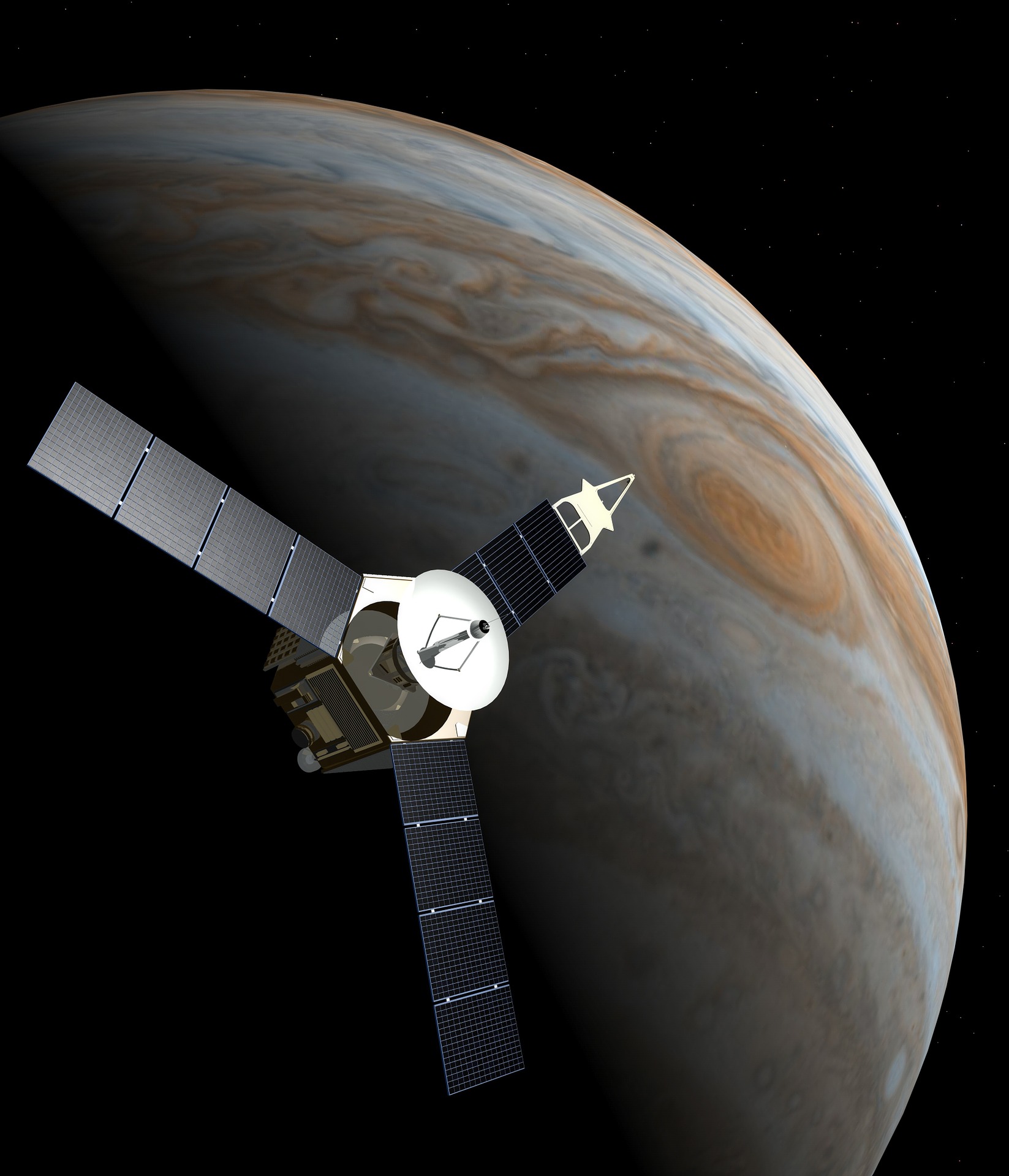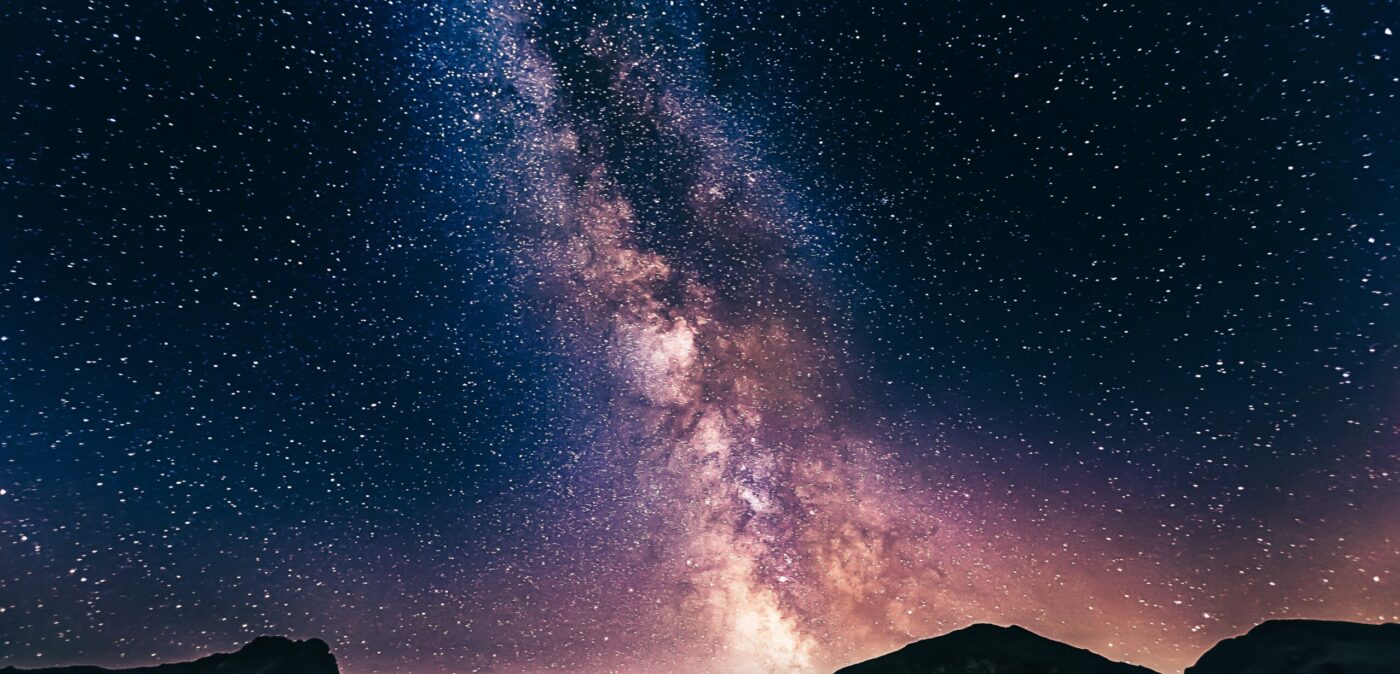
Jupiter from Juno
One tiny spacecraft is tasked with exploring the turbulent clouds of the king of our Solar System. Against a planet that is 11 times the size of the Earth in diameter, our small spacecraft is nothing more than a dot, hovering precariously over clouds that are ferociously whipped around, creating some of the most dangerous storms in the solar system. Jupiter is the largest and most violent planet in our neighborhood, and the spacecraft Juno has the mission of peering below its dangerous atmosphere to see what the planet is really like down below.
Jupiter was discovered by the ancients and its moons were first seen by Galileo. Ever since then, the planet has captured our imagination. Its brutal storms create beautiful swirling patterns across the planet and its signature feature is the Great Red Spot, a storm larger than our planet, that has been raging for at least hundreds of years. In 1973, Pioneer 10 did the first flyby of this giant, and what it saw left the world in awe and scientists yearning for more. From 1995 to 2003, the Galileo spacecraft studied the atmosphere and a few years later, New Horizons also conducted a flyby as it used a gravitational assist to slingshot itself farther into the realm of the outer planets. But it’s not until 2016, when the Juno spacecraft arrives at Jupiter, that scientists receive in depth data about Jupiter and some of its moons.
Juno’s mission is to search for traces of water in the atmosphere of Jupiter as well as take a look at it’s composition, temperature, magnetic and gravity fields and explore the northern and southern lights (much like our northern lights or Aurora Borealis). Because of its immense size, it makes sense that Jupiter must have had a very crucial role in the formation of our solar system. Juno is the first spacecraft that has the technology to uncover these secrets, and learn about the anatomy of Jupiter-
The core:
Long before Juno reached its destination, there was a lot of speculation as to whether or not Jupiter even had a core. Some argued that during its formation, Jupiter was made up of rocks that stuck together and pulled themselves together through their gravity. Since it formed early on, there was still a lot of gas and dust left, so Jupiter cloaked itself in these gases until it became the giant we see today. On the flip side, Jupiter may not have a core at all and be comprised of only the gas and dust from our early solar system. Juno, however, revealed something surprising. While Jupiter does indeed have a rocky core, it nowhere near as defined as scientists originally believed. Instead of being a compact sphere like the one Earth has, Jupiter’s core is spread out among nearly half of its diameter. This revelation opened the doors to new theories that can explain how Jupiter and our early system formed.
The magnetic field:
Unlike what scientists first believed, the Jovian magnetic field is way more jumbled up than they first theorized. On Earth, the magnetic field is very clear and well defined. However, Jupiter’s field is all over the place. Instead of having the field emerge from the north and south poles and wrap around the planet, Jupiter’s field starts from different places along the atmosphere and spirals out uncontrolled. The most valid explanation is that this is a side effect of its unique core.
The Atmosphere:
Before the Juno mission, extraterrestrial water was seen on a few moons and planets but Juno surprised us all when scans revealed that the atmosphere is made up of much more water than first anticipated. This is a topic that covered in a whole different article right here
Juno has opened our eyes to the Jovian world and showed us that just when we start to understand how something works, there’s something crazy and unexpected that’s thrown in our way. That’s the beauty of this kind of science: It’s never really over and there is always something more lurking just beyond what we can comprehend. But this little spacecraft has given us a look inside the king of our solar system, giving us the opportunity to learn how our early solar system worked.
Resources:
NASA, NASA, ASTRONOMY.COM






Tagged #cassini, #clouds, #hexagonalstorm, #magneticfield, #saturn